Installation view of Light/Source, featuring Leo Villareal's Buckyball, 2015, Mary Corse's Untitled (White, Black, Yellow), 2013, Tracey Emin's Your Lips Moved Across My Face, 2015 and Jorge Pardo's Untitled, 2014.
The Ancient Egyptians' depictions of the sun god Ra, the Renaissance's development of chiaroscuro and sfumato techniques and the advent of photography are all manifestations of light's function within Western art. But it was only with the commercialization of the incandescent light bulb at the beginning of the 20th century that light became a focus and material element in artists' work.
This artistic exploration exploded after World War II: Early Pop icons embodied the complexities within the human-light-object relationship, and Dan Flavin's minimalist assemblies of fluorescent tubing mark the inception of light art as it is understood today. With works by Robert Irwin and James Turrell, the "object" was no longer required and the concept of what art could be was upended.
This summer, Phillips' Arnold Lehman has curated a selling exhibition that expounds on this dialogue through nine works defined by their luminosity. Read on and visit our galleries at 450 Park Avenue now through 26 August to explore the show.
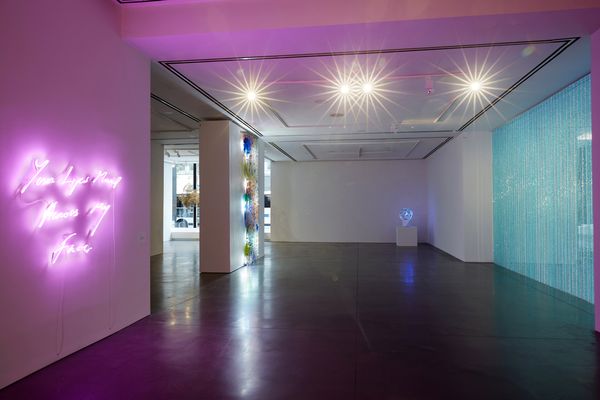
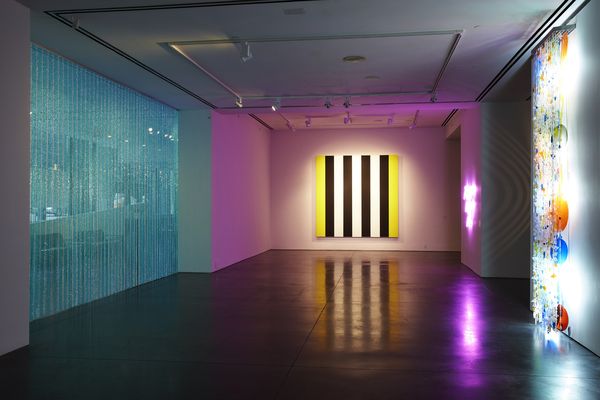
Phillips: How did you find your inspiration for this project and come to this theme?
Arnold Lehman: As Phillips has often presented a summer exhibition, I thought I would go with the season and focus on how artists use light. I thought Light/Source would be an excellent way to reflect indirectly on one of the essential elements of summer: the extended hours of daylight. Personally, very few meteorological issues are as important to me as the additional hours of summer sunlight we enjoy!
P: You chart the progression of light as a medium engaged by artists from Duchamp to Flavin to Turrell. How much do you think contemporary artists look to these twentieth-century pioneers and how does it impact their practice?
AL: I have always believed that artists are exceedingly knowledgeable about art history. They are committed to looking at and understanding the past, particularly the recent past. I certainly believe that many artists — including Flavin and Turrell — have helped to inform, if not inspire, the contemporary artists whose work is presented in Light/Source.
González-Torres never considered a work of art viable unless the public participated with it...this beaded curtain really fulfills that quite spectacularly.
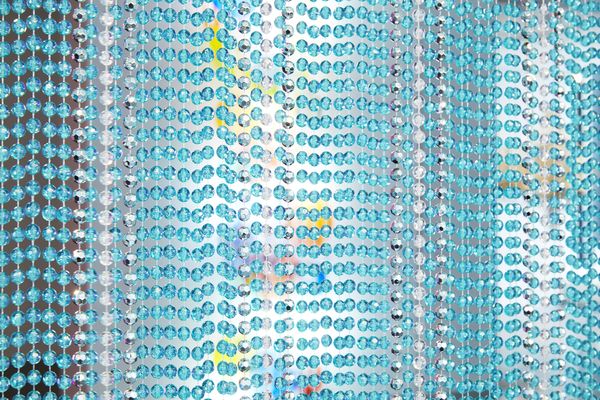
Félix González-Torres “Untitled” (Water), 1995. Strands of beads and hanging device. The Baltimore Museum of Art: Purchase with exchange funds from Bequest of Saidie A. May, BMA 1995.73 © The Felix Gonzalez-Torres Foundation. Courtesy of Andrea Rosen Gallery, New York.
P: Félix González-Torres' "beaded curtain," one of a series he did in the 1990s, provides a powerful yet ethereal entrance to the show: the visitor must pass through it. Was the artist's intention to balance confrontation and serenity?
AL: I am intimately familiar with this particular work of art because I was fortunately able to acquire it for the Baltimore Museum soon after it was made. I did so because I believed then, and still do, that Felix González-Torres is one of the most important conceptual artists in the second half of the 20th century. I am thrilled that, with the cooperation of the Baltimore Museum of Art and the Félix González-Torres Foundation, we were able to present it at Phillips.
In understanding the work, we must remember that the artist subtitled it "water." As with water, the work is fluid, something to move through, to move with. And it is about transformation: inside/outside, insider/outsider, light/dark, life/death. As such, it was the perfect entrance to this exhibition. In regard to the very issue of transformation, the need for visitors to walk through this curtain — sometimes with almost swim-like gestures — to see what is on the other side establishes that the experience goes far beyond the work itself. I once described the curtain, which reflects every bit of light around it, as strands of shimmering fireflies. But going back to the question of confrontation and serenity, Félix González-Torres' work is always about life itself; he was always an optimist in the face of the life and death issues that confronted him and so many of his artist friends during the AIDS crisis. Indeed, another interpretation of these beaded pieces is that they represent a kind of biological analysis of the AIDS virus itself.
The artist never considered a work of art viable unless the public participated with it, in it, passed through it or took elements of it away. This curtain fulfills that quite spectacularly. His takeaway pieces — the stacks of candy and of paper — are likely remembered much more by the public because they took something away with them as a memento. But these curtains also provide something to take away: an extraordinary experience. I have seen people walk in and out and in and out through the beads, letting them play over their bodies in a way that I think Felix would have loved.
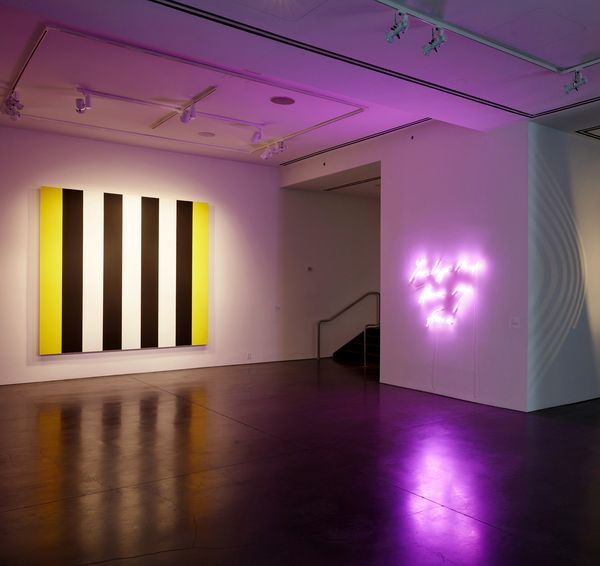

(Left) Tracey Emin Your Lips Moved Across My Face, 2015. Neon. Courtesy the artist and Lehmann Maupin, New York and Hong Kong; (Right) Mary Corse Untitled (White, Black, Yellow), 2013. Glass microsphere in acrylic on canvas. Courtesy the artist and Lehmann Maupin, New York and Hong Kong.
P: Light/Source features works by two female artists — Tracey Emin of the YBAs and Mary Corse, an early member of the Light and Space movement — on neighboring walls. Does this juxtaposition demonstrate the expansive realm of possibility for artists who use light?
AL: These artists represent a very diverse approach to using light. However, in their own way, they both encapsulate light in their works. The neon gas that runs through these particular works by Emin operates in a very similar manner to how Mary Corse incorporates glass microspheres in the very paint that creates the surface of the work. So the thought process is not that dissimilar. Installing the works, I liked how the linear regularity of the Corse played against the scrawling "handwriting" of the Emin, and vice versa. These are just two examples of the limitless opportunities for artists to use the medium of light.
P: A chandelier-like sculpture by Korean artist Lee Bul adds an additional, almost foreboding, dimension to the show. What inspires her to create these elaborately enveloped works from crystalline materials?
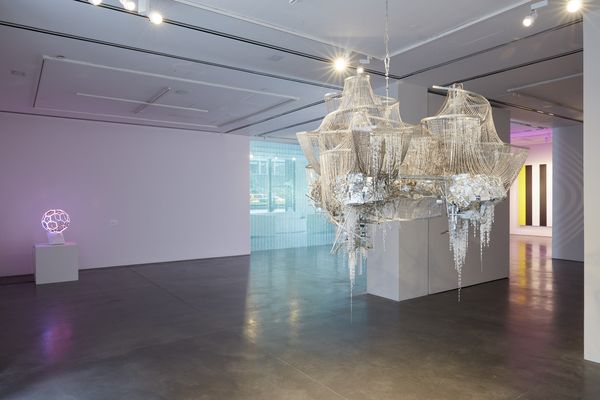
Installation view featuring Lee Bul Untitled, 2014. Crystal, glass and acrylic beads, mirrors, stainless-steel, aluminum and black nickel rods, steel and bronze chains, stainless-steel and aluminum armature. Courtesy the artist and Lehmann Maupin, New York and Hong Kong.
AL: Lee Bul is one of the most enigmatic artists represented in this exhibition, if not within contemporary art itself. The issues in her work range broadly, but much of it focuses on the marginalization of women, particularly in Korea as well as generally, and an investigation, looking back and forward in time, of the options that the future might hold and how we might influence it. This period of her work looks at expressions of a utopian future, particularly as conceived by early twentieth-century architects and theorists such as Bruno Taut. Bul has reimagined and reengineered Taut's lessons about the future and created these mechanical but almost creature-like sculptures that are both mysterious and foreboding. These sculpture are reminiscent of a chandelier without having any innate light source: Through their bits and pieces of mirrors, beads and other reflective surfaces, the sculptures catch light and reflect it back. However, with their mechanistic, dark and nearly evil appearance, they project more of a dystopian rather than utopian future.
Lee Bul is an amazingly creative artist. With or without an inherent light source, her work conveys a different message about the exhibition's theme.
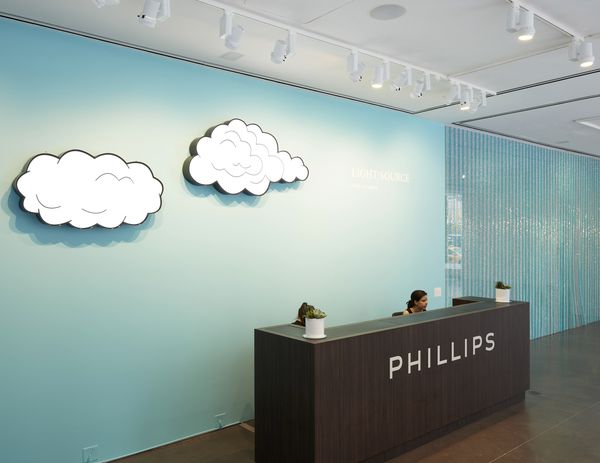
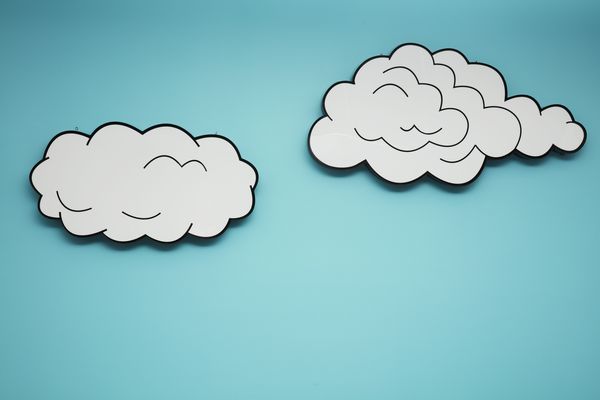
Sanford Biggers Cumulus II, 2013; Cumulus IV, 2015. Black vinyl, white Plexiglas, LEDs. Private Collection of Jason Liebman, courtesy of Eric Firestone Gallery.
P: Do you have a favorite piece in the show and what makes it so special for you?
AL: If I had to choose one work that could stand alone in the gallery, hold the entire space and speak eloquently to the theme of the exhibition, it would be the Félix González-Torres.
However, every day that I come into the gallery, I look forward to seeing Sanford Biggers' "clouds." Against the blue (taken from the principal color of the González-Torres beads), they speak of summer. They are happy, almost whimsical. Their placement in the exhibition indirectly announces the idea of light: Clouds both reflect light and block the sun’s light — annoying thousands of sun worshippers and beach-goers! However, the Biggers clouds wonderfully just hover there as a welcoming introduction to the exhibition.
While every aspect of our lives and environment changes every day, our need for light remains.
P: What role do you imagine light will play in contemporary art and sculpture over the next 10-20 years?
AL: It is really difficult to predict, but I cannot imagine that the medium of light will become less important to artists moving forward. While every aspect of our lives and environment changes every day, our need for light remains. As climate change continues to affect our environment, artists will continue to wrestle with ways to communicate both those changes and the potential outcome. We will have to revisit this question 20 years from now when we present our next Light/Source exhibition...
Arnold Lehman is a Senior Advisor at Phillips. He has been a museum director for more than four decades, including leadership of the Baltimore Museum of Art and, for nearly 20 years most recently, the Brooklyn Museum.
